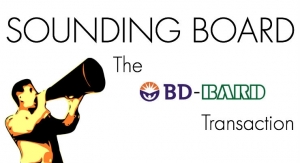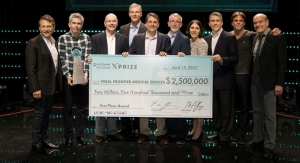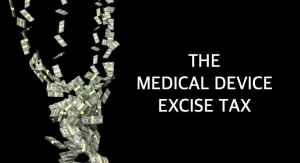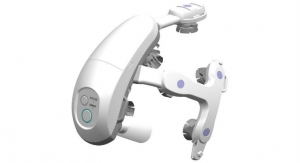Ben Dunn, Covington Associates06.09.16
The landscape of medical product outsourcing (MPO) providers has changed dramatically over the past decade. New companies have formed, offering a broad range of solutions globally, while others have disappeared, resulting in a constantly evolving group of suppliers. While several factors have contributed to this evolution—OEM consolidation, globalization, market growth, etc.—a major element has been the emergence of private equity (PE) in this market.
Simply mention the phrase “private equity” to a group of people and it will elicit a range of strong responses ranging from the highly positive to the highly negative, as people conjure images of either Warren Buffett or Gordon Gecko. Regardless of where one’s thoughts fall on this spectrum, there is no denying that private equity has made a significant impact. However, before delving into what impact private equity has had on the medical product outsourcing industry, we first need to look into why it has played a role at all.
Private equity is not a new phenomenon and has been around for several decades. PE firms raise money from institutional investors such as pension funds and college endowments.
The firms then pool these investments into specific funds, which are mandated to invest and return the capital within a given time frame (generally around 10 years). PE firms measure their performance by the internal rate of return (IRR) on their investments. To achieve the highest IRR, a firm needs to create the highest amount of value over the shortest period of time. While PE has existed for a long time, what has recently changed is the rapid growth of the medical product outsourcing industry. Nowhere is this more evident than by looking at the amount of capital that has been raised—nearly $5 trillion globally over the past decade. Of this total amount, according to Pitchbook, U.S.-based PE firms hold a staggering $675 billion of uninvested capital that is waiting to be deployed into the acquisition of companies. This enormous amount of capital is (figuratively speaking) burning a hole in funds’ pockets, for if the funds do not use this money, they must return it to investors and the IRR will suffer. As a consequence, a record number of firms with large amounts of undeployed capital are scouring the globe in search of investment opportunities.
With all of these firms and all of this capital, it is not surprising that they have been targeting medical manufacturing. Just about every single owner of a medical manufacturing business has received multiple calls, emails, or faxes from someone expressing interest in acquiring or investing in their business. Chances are the groups behind these unsolicited overtures are private equity firms. These groups are targeting medical product outsourcing not just because they have money to deploy, but because this market has a number of attributes that make it particularly attractive to private equity. Those attributes include:
One of the earliest examples of PE involvement was the creation of MedSource Technologies Inc. MedSource was created in 1999 through the combination of seven smaller companies. In 2004, MedSource combined with another PE-backed firm, UTI, to create Accellent. The resulting large company offered a broad range of manufacturing services fully focused on the medical device market. Accellent’s creation demonstrated that size and breadth of capabilities matter to OEMs but that one still could not overlook successful integration and customer responsiveness. While it can certainly be debated how successful this platform was from the customer’s perspective, it did provide a very healthy return for the initial investors and served as an example of what could be done in this market. This successful investment led others to actively pursue the MPO market. KRG Capital Partners, an investor in UTI, immediately followed up its investment by acquiring the MedTech Group Inc. and starting a second platform, which has since become Vention Medical. Building upon the lessons learned in creating UTI and MedSource, they and others have focused more on effectively integrating the various pieces.
Companies such as Vention, Phillips-Medisize, AdvanceCath, and Creganna could not have scaled without the heavy financial resources and deal acumen that PE firms bring. These platforms successfully created new combinations of service offerings for OEMs that previously had not existed. While acquisitions still occurred prior to the entrance of PE, the range and number of transactions has increased markedly. Yet another benefit in creating these platforms is that PE firms have worked to professionalize the management of contract manufacturers and have attracted new managerial talent to the industry. This has effectively transformed MPO from a cottage industry into a more developed, cohesive global presence.
While it is easy to think of all PE as the same, not all PE investments have followed the roll-up and exit formula in the MPO industry. There are PE firms that have employed internally-focused strategies to success. Schooner Capital is a firm that does not have money tied to a specific investment fund and as a consequence, has the flexibility to invest over a longer time horizon. Schooner acquired Millstone Medical Outsourcing more than 10 years ago and still owns it today. Rather than pursuing a rapid acquisition strategy, Millstone has relied on organic growth and elected to invest internally, where it has successfully grown into a larger business with a unique offering.
One of the benefits of PE investing has been a marked increase in liquidity options for business owners. With a healthy supply of capital, PE firms are willing buyers and provide a range of exit opportunities for owners that did not exist previously. This capital and activity has had an additional impact—rising valuations. Greater activity among a broader range of buyers has led to a steady rise in valuations for MPO companies.
While PE firms have created new options for OEMs, it has not been without its challenges. One of the side effects of an acquisition strategy is that some customer relationships get strained in the transition—contacts change and responsiveness may suffer. There can be significant management turnover and business processes change (not always for the better).
Companies become used to how a relationship works and PE involvement inevitably brings about change. Most OEMs can point to examples where one of their trusted suppliers was acquired and the net results were less than satisfactory. The argument that some PE-backed firms have been more focused on growth than customer service can certainly be made.
The other challenge for OEMs is that PE has different priorities than more traditional owners. PE’s objective is to rapidly increase the value of the business, which generally means focusing on profitability and scale (greater efficiency). The other factor driving PE behavior is timing. Most PE firms need to invest and liquidate their funds within a set time period. This ensures that investors receive their money within a reasonable period of time. While individual fund mandates differ, most funds look to maintain an investment for five years or so. But with an incentive to maximize profits over a short-term horizon, there is less incentive to invest in the business and maintain certain customer relationships.
This creates an interesting dilemma from the OEM perspective. OEMs today are looking for strategic outsourcing partners and are investing a great deal of time and resources into partners that will help them produce and manage a product globally. While PE-backed firms give them large platforms with broad and innovative offerings, they do raise the question of how long these firms will be around. From the OEM perspective, one must enter into a relationship with a PE-backed MPO provider with a full understanding of what the provider’s motivations are and be cognizant that the owners they are working with today may not be the owners they will be working with two years from now. In addition, because relationships are changing, OEMs need to consider how important they are to the MPO provider and whether they will receive the level of service they require.
For the owner of an MPO business that is not PE-backed, there are a number of things to consider. Putting aside the distracting calls and outreach they constantly receive, one needs to be cognizant that they are part of an incredibly dynamic environment and that the pace of change is greatly accelerating. PE has unleashed forces and money that is forever changing the MPO landscape. The competitors they face today will not be the same competitors they will face tomorrow. New platforms will form and older ones will disappear. As with any change, this presents companies with opportunities and threats—the bottom line is to be prepared for this change and understand how to react.
PE has enabled the creation of new, innovative platforms in the MPO industry, providing a greater range of alternatives for OEMs. In addition, they have provided much-needed investment and liquidity alternatives into a vibrant industry. This growth has helped to drive the industry but has also strained some key industry relationships. As PE accelerates the pace of change and disrupts industry dynamics, the primary stakeholders—OEMs and MPO providers—need to take notice, keeping in mind the motivations of the groups they are dealing with and plan accordingly.
Ben Dunn is a managing director with Boston, Mass.-based Covington Associates. For more than 20 years, he has advised medical technology companies in the areas of mergers, acquisitions, investments, and strategic partnerships. Having advised clients on more than 100 transactions, Dunn has represented both private and public companies on both the buy and sell side. He is a frequent speaker at healthcare conferences and the author of numerous articles, including the white paper, “Medical Device Outsourcing Industry: Emerging Trends and Opportunities.”
Simply mention the phrase “private equity” to a group of people and it will elicit a range of strong responses ranging from the highly positive to the highly negative, as people conjure images of either Warren Buffett or Gordon Gecko. Regardless of where one’s thoughts fall on this spectrum, there is no denying that private equity has made a significant impact. However, before delving into what impact private equity has had on the medical product outsourcing industry, we first need to look into why it has played a role at all.
Private equity is not a new phenomenon and has been around for several decades. PE firms raise money from institutional investors such as pension funds and college endowments.
The firms then pool these investments into specific funds, which are mandated to invest and return the capital within a given time frame (generally around 10 years). PE firms measure their performance by the internal rate of return (IRR) on their investments. To achieve the highest IRR, a firm needs to create the highest amount of value over the shortest period of time. While PE has existed for a long time, what has recently changed is the rapid growth of the medical product outsourcing industry. Nowhere is this more evident than by looking at the amount of capital that has been raised—nearly $5 trillion globally over the past decade. Of this total amount, according to Pitchbook, U.S.-based PE firms hold a staggering $675 billion of uninvested capital that is waiting to be deployed into the acquisition of companies. This enormous amount of capital is (figuratively speaking) burning a hole in funds’ pockets, for if the funds do not use this money, they must return it to investors and the IRR will suffer. As a consequence, a record number of firms with large amounts of undeployed capital are scouring the globe in search of investment opportunities.
With all of these firms and all of this capital, it is not surprising that they have been targeting medical manufacturing. Just about every single owner of a medical manufacturing business has received multiple calls, emails, or faxes from someone expressing interest in acquiring or investing in their business. Chances are the groups behind these unsolicited overtures are private equity firms. These groups are targeting medical product outsourcing not just because they have money to deploy, but because this market has a number of attributes that make it particularly attractive to private equity. Those attributes include:
- A highly attractive market—The market for medical product outsourcing services, according to our estimates, is more than $30 billion and growing at over 10 percent annually—faster than the growth in the overall medical device industry. This large, growing market provides a range of opportunities to grow a business.
- Exposure to the healthcare market—The healthcare market has much greater stability than the consumer or technology markets. The long term fundamentals of this market remain strong. MPO companies provide an easier and less risky entry into the healthcare market as opposed to making an investment into a medical device or medical provider-based company.
- Market fragmentation—The highly fragmented nature of the MPO market provides ample opportunity for consolidation and the opportunity to achieve the benefits of economies of scale—two key plays in the private equity playbook.
- Previous successful PE exits—A number of successful exits by PE-backed firms (MedSource International, UTI Corporation, Avail Medical Products Inc., Creganna Medical, AdvancedCath, Phillips-Medisize, and others) serve as validation to PE firms that this is a successful market for investors.
One of the earliest examples of PE involvement was the creation of MedSource Technologies Inc. MedSource was created in 1999 through the combination of seven smaller companies. In 2004, MedSource combined with another PE-backed firm, UTI, to create Accellent. The resulting large company offered a broad range of manufacturing services fully focused on the medical device market. Accellent’s creation demonstrated that size and breadth of capabilities matter to OEMs but that one still could not overlook successful integration and customer responsiveness. While it can certainly be debated how successful this platform was from the customer’s perspective, it did provide a very healthy return for the initial investors and served as an example of what could be done in this market. This successful investment led others to actively pursue the MPO market. KRG Capital Partners, an investor in UTI, immediately followed up its investment by acquiring the MedTech Group Inc. and starting a second platform, which has since become Vention Medical. Building upon the lessons learned in creating UTI and MedSource, they and others have focused more on effectively integrating the various pieces.
Companies such as Vention, Phillips-Medisize, AdvanceCath, and Creganna could not have scaled without the heavy financial resources and deal acumen that PE firms bring. These platforms successfully created new combinations of service offerings for OEMs that previously had not existed. While acquisitions still occurred prior to the entrance of PE, the range and number of transactions has increased markedly. Yet another benefit in creating these platforms is that PE firms have worked to professionalize the management of contract manufacturers and have attracted new managerial talent to the industry. This has effectively transformed MPO from a cottage industry into a more developed, cohesive global presence.
While it is easy to think of all PE as the same, not all PE investments have followed the roll-up and exit formula in the MPO industry. There are PE firms that have employed internally-focused strategies to success. Schooner Capital is a firm that does not have money tied to a specific investment fund and as a consequence, has the flexibility to invest over a longer time horizon. Schooner acquired Millstone Medical Outsourcing more than 10 years ago and still owns it today. Rather than pursuing a rapid acquisition strategy, Millstone has relied on organic growth and elected to invest internally, where it has successfully grown into a larger business with a unique offering.
One of the benefits of PE investing has been a marked increase in liquidity options for business owners. With a healthy supply of capital, PE firms are willing buyers and provide a range of exit opportunities for owners that did not exist previously. This capital and activity has had an additional impact—rising valuations. Greater activity among a broader range of buyers has led to a steady rise in valuations for MPO companies.
While PE firms have created new options for OEMs, it has not been without its challenges. One of the side effects of an acquisition strategy is that some customer relationships get strained in the transition—contacts change and responsiveness may suffer. There can be significant management turnover and business processes change (not always for the better).
Companies become used to how a relationship works and PE involvement inevitably brings about change. Most OEMs can point to examples where one of their trusted suppliers was acquired and the net results were less than satisfactory. The argument that some PE-backed firms have been more focused on growth than customer service can certainly be made.
The other challenge for OEMs is that PE has different priorities than more traditional owners. PE’s objective is to rapidly increase the value of the business, which generally means focusing on profitability and scale (greater efficiency). The other factor driving PE behavior is timing. Most PE firms need to invest and liquidate their funds within a set time period. This ensures that investors receive their money within a reasonable period of time. While individual fund mandates differ, most funds look to maintain an investment for five years or so. But with an incentive to maximize profits over a short-term horizon, there is less incentive to invest in the business and maintain certain customer relationships.
This creates an interesting dilemma from the OEM perspective. OEMs today are looking for strategic outsourcing partners and are investing a great deal of time and resources into partners that will help them produce and manage a product globally. While PE-backed firms give them large platforms with broad and innovative offerings, they do raise the question of how long these firms will be around. From the OEM perspective, one must enter into a relationship with a PE-backed MPO provider with a full understanding of what the provider’s motivations are and be cognizant that the owners they are working with today may not be the owners they will be working with two years from now. In addition, because relationships are changing, OEMs need to consider how important they are to the MPO provider and whether they will receive the level of service they require.
For the owner of an MPO business that is not PE-backed, there are a number of things to consider. Putting aside the distracting calls and outreach they constantly receive, one needs to be cognizant that they are part of an incredibly dynamic environment and that the pace of change is greatly accelerating. PE has unleashed forces and money that is forever changing the MPO landscape. The competitors they face today will not be the same competitors they will face tomorrow. New platforms will form and older ones will disappear. As with any change, this presents companies with opportunities and threats—the bottom line is to be prepared for this change and understand how to react.
PE has enabled the creation of new, innovative platforms in the MPO industry, providing a greater range of alternatives for OEMs. In addition, they have provided much-needed investment and liquidity alternatives into a vibrant industry. This growth has helped to drive the industry but has also strained some key industry relationships. As PE accelerates the pace of change and disrupts industry dynamics, the primary stakeholders—OEMs and MPO providers—need to take notice, keeping in mind the motivations of the groups they are dealing with and plan accordingly.
Ben Dunn is a managing director with Boston, Mass.-based Covington Associates. For more than 20 years, he has advised medical technology companies in the areas of mergers, acquisitions, investments, and strategic partnerships. Having advised clients on more than 100 transactions, Dunn has represented both private and public companies on both the buy and sell side. He is a frequent speaker at healthcare conferences and the author of numerous articles, including the white paper, “Medical Device Outsourcing Industry: Emerging Trends and Opportunities.”























